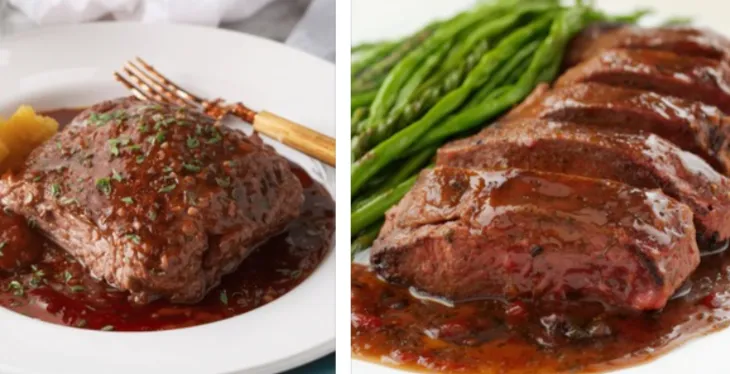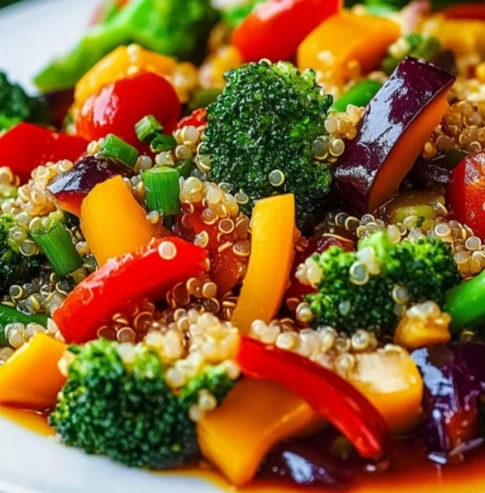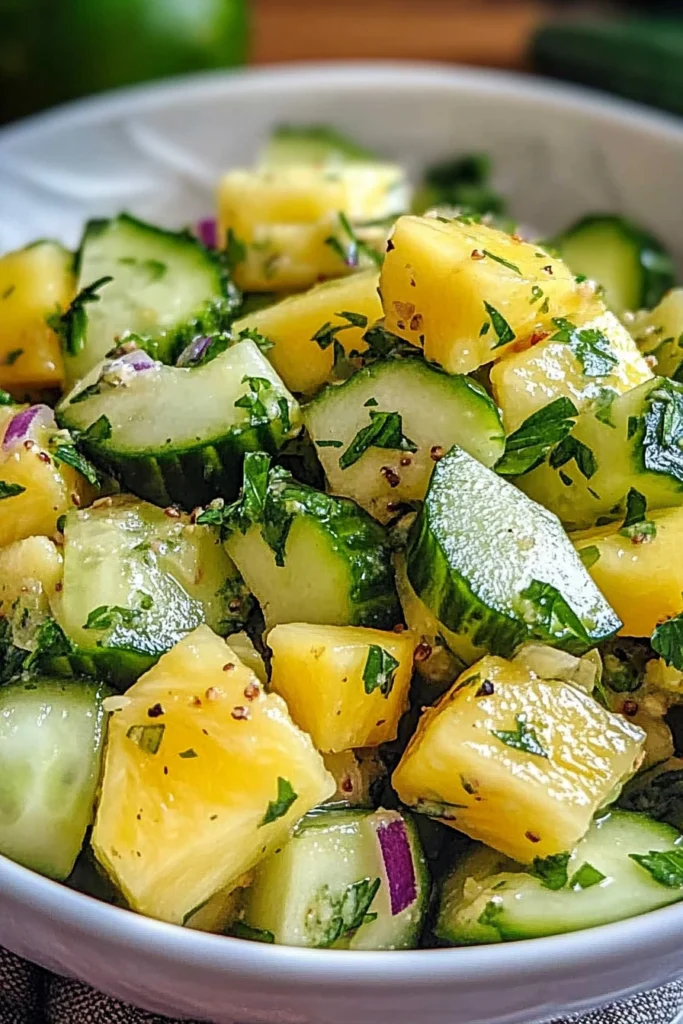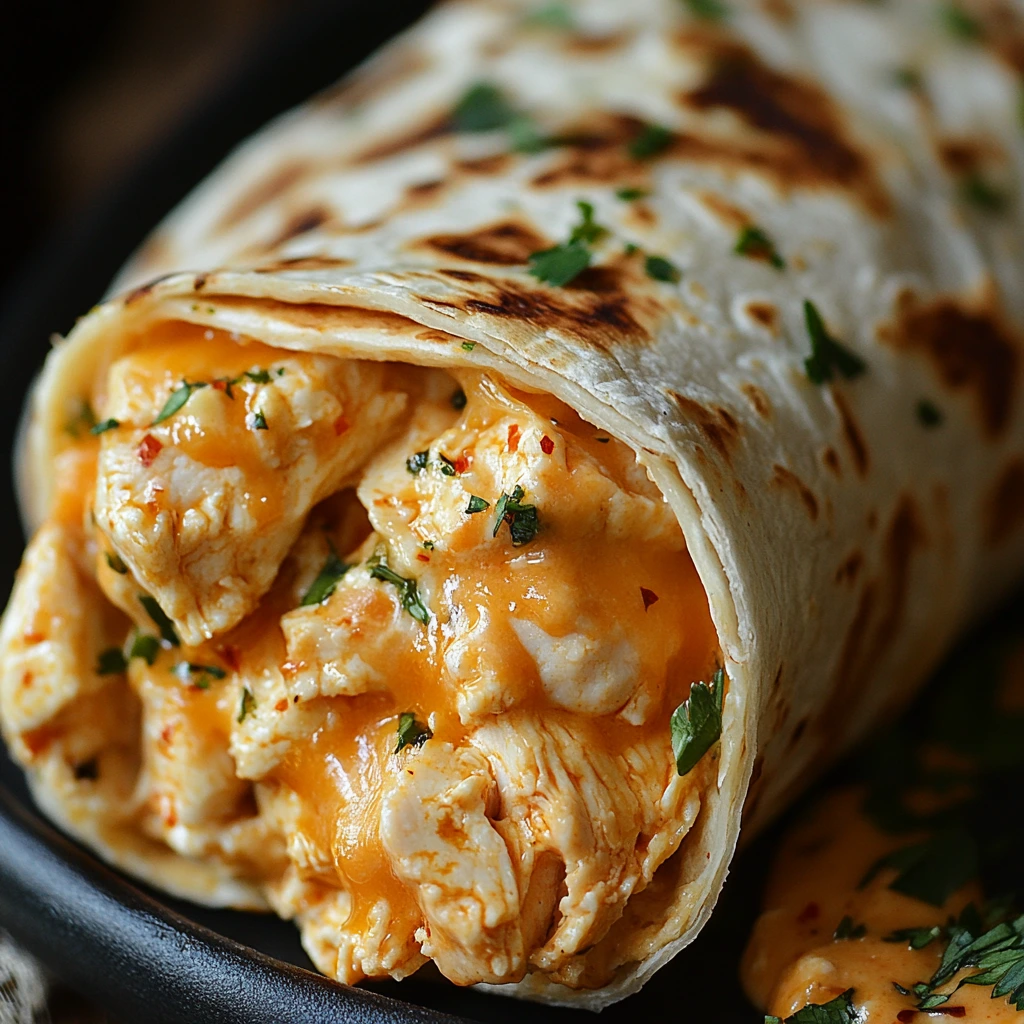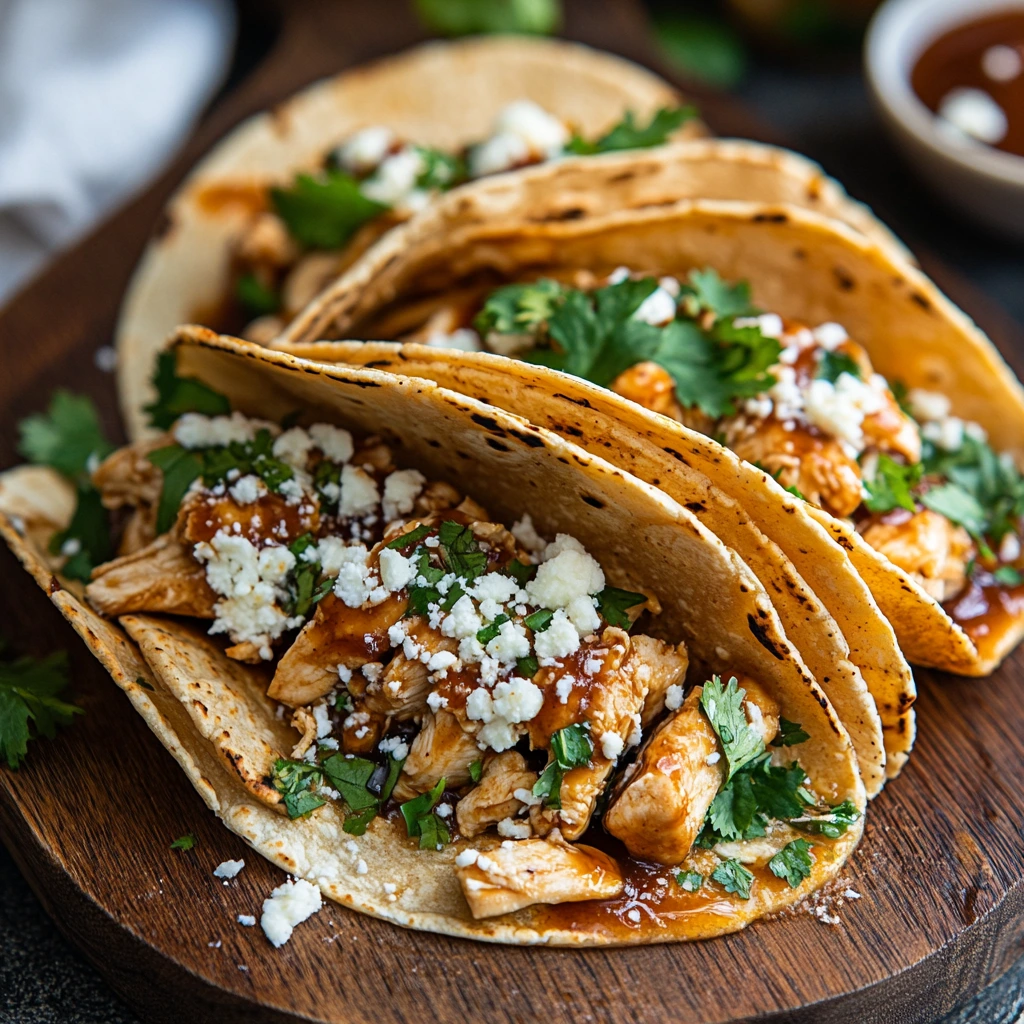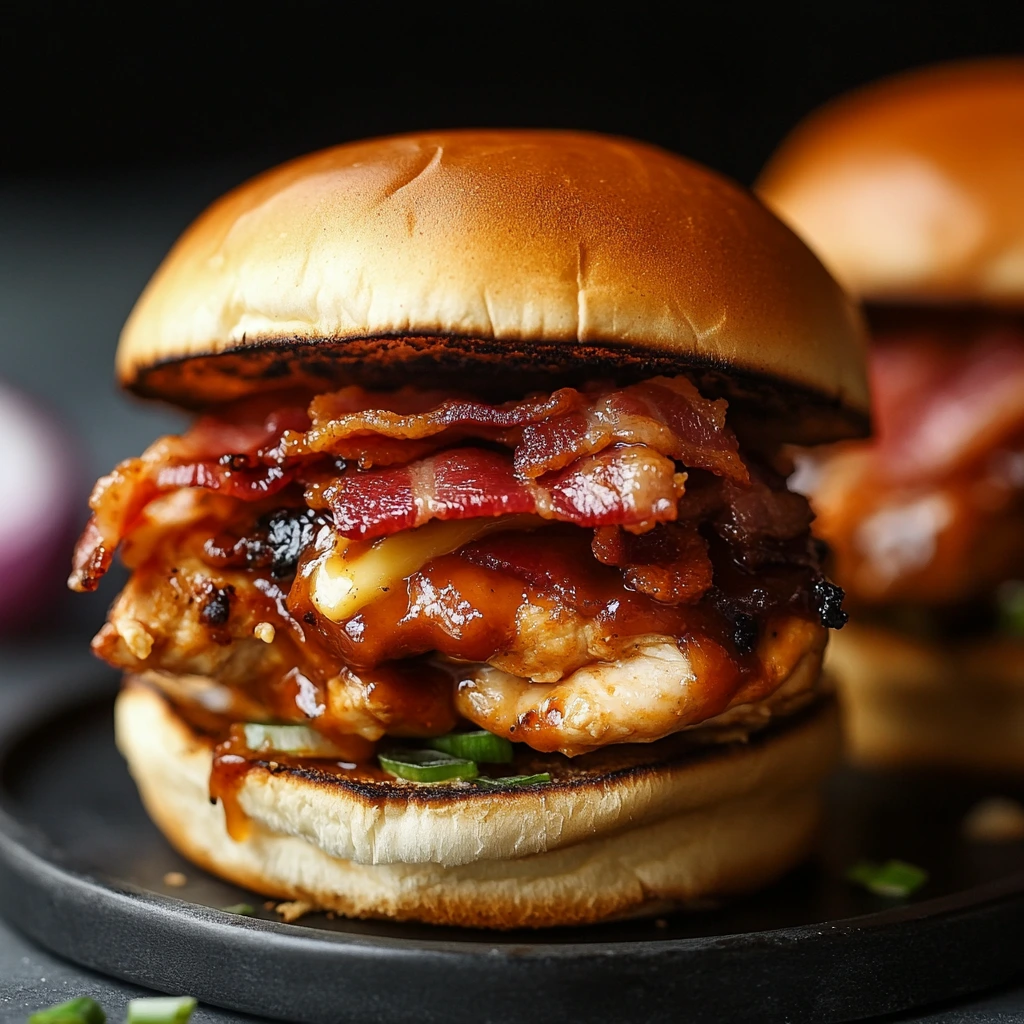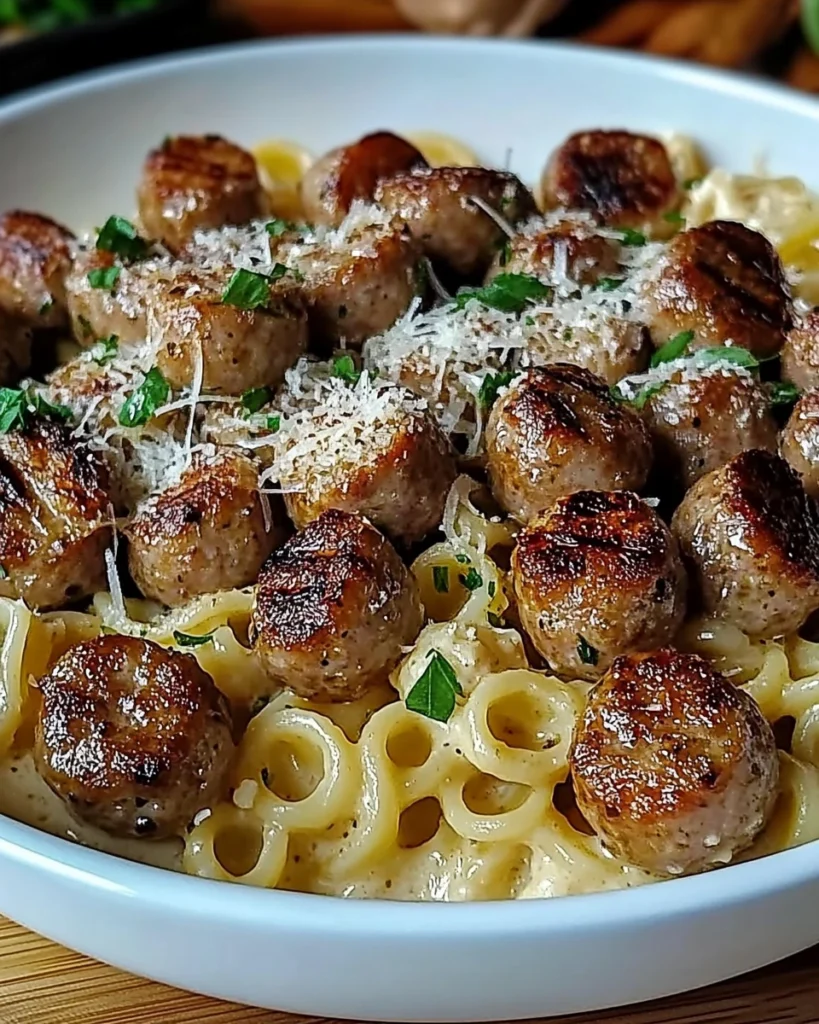There’s something undeniably special about a beautifully roasted beef served with a deep, velvety red wine sauce. It’s the kind of dish that brings sophistication to your dinner table, fills your kitchen with irresistible aromas, and makes everyone reach for seconds. Whether you’re planning a cozy weekend dinner or hosting a formal holiday meal, Roast Beef with Red Wine Sauce is a showstopper that’s easier to master than you think.
In this complete guide, we’ll walk you through everything you need to know — from choosing the right cut of beef and perfecting the roasting process to crafting a rich red wine sauce that enhances the natural flavors of the meat. You’ll also find expert tips, serving ideas, and storage advice to ensure that every bite tastes like perfection.
Why Roast Beef with Red Wine Sauce Is a Timeless Classic
Roast beef is more than just a meal — it’s a tradition. Its origins stretch back centuries, from English Sunday roasts to French-inspired red wine sauces that bring a touch of refinement to rustic dishes. The pairing of beef and red wine is no accident: the tannins in the wine cut through the richness of the meat, creating a perfect balance of depth, acidity, and flavor.
When cooked properly, roast beef becomes tender, juicy, and infused with subtle herb and garlic notes. The red wine sauce adds an extra layer of complexity, transforming a simple roast into a luxurious dining experience.
Choosing the Best Cut of Beef
The secret to an unforgettable roast beef lies in choosing the right cut. Not all beef is created equal when it comes to roasting. Here are the top choices for this dish:
1. Ribeye Roast (Prime Rib)
Rich, well-marbled, and incredibly tender. Perfect for festive occasions when you want a melt-in-your-mouth texture.
2. Top Sirloin Roast
A leaner option that’s still flavorful and juicy when cooked to medium-rare. Ideal for family dinners.
3. Tenderloin (Beef Fillet)
Ultra-tender and elegant — the centerpiece for fine dining. It pairs beautifully with red wine sauce, though it’s pricier.
4. Chuck Roast
A more affordable option with excellent flavor. It benefits from slow roasting to achieve fork-tender results.
Pro Tip:
Choose a roast with good marbling — those fine streaks of fat running through the meat ensure tenderness and flavor.
Ingredients You’ll Need
Here’s what you’ll need to make a classic Roast Beef with Red Wine Sauce that’s bursting with flavor.
For the Roast Beef:
- 3 to 4 lbs beef roast (ribeye, tenderloin, or sirloin)
- 2 tablespoons olive oil
- 4 garlic cloves, minced
- 1 tablespoon fresh rosemary, chopped
- 1 tablespoon thyme, chopped
- 2 teaspoons salt
- 1 teaspoon black pepper
the Red Wine Sauce:
- 1 cup dry red wine (Cabernet Sauvignon or Merlot work beautifully)
- 2 cups beef broth
- 2 tablespoons butter
- 2 tablespoons all-purpose flour
- 2 shallots, finely diced
- 2 garlic cloves, minced
- 1 teaspoon Dijon mustard (optional for extra depth)
- 1 sprig of rosemary
- Salt and pepper to taste
Step-by-Step Recipe Instructions
1: Prepare the Beef
Pat the beef dry with paper towels — this helps the seasoning stick and encourages even browning. Rub the roast with olive oil, minced garlic, rosemary, thyme, salt, and black pepper. Let it sit at room temperature for about 30 minutes before cooking. This allows the beef to cook more evenly.
2: Sear the Roast
Preheat your oven to 450°F (230°C). Heat a large oven-proof skillet or roasting pan over high heat. Add a drizzle of olive oil and sear the beef on all sides until golden brown, about 3–4 minutes per side. This step locks in the juices and develops flavor.
3: Roast to Perfection
Transfer the pan to the oven. Roast the beef for 15 minutes at 450°F to develop a crust, then reduce the temperature to 325°F (160°C). Continue roasting until the internal temperature reaches your preferred doneness:
- Rare: 120°F (49°C)
- Medium-rare: 130°F (54°C)
- Medium: 140°F (60°C)
Use a meat thermometer for accuracy. Once done, remove the roast and cover it loosely with foil. Let it rest for 15–20 minutes before slicing.
4: Make the Red Wine Sauce
While the beef rests, use the same pan to prepare your sauce.
- Pour off most of the fat, leaving about 1 tablespoon in the pan.
- Add butter and sauté shallots until translucent.
- Stir in garlic and cook for 1 minute.
- Sprinkle flour over the mixture, stirring constantly to form a roux.
- Slowly whisk in red wine, scraping up the browned bits from the bottom of the pan — that’s where the flavor lives!
- Add beef broth, Dijon mustard, and rosemary. Let it simmer until thickened (about 10–12 minutes).
- Strain the sauce through a fine mesh sieve for a smooth, glossy texture.
Taste and adjust seasoning with salt and pepper.
The Art of Pairing Red Wine with Beef
A key part of this recipe’s success lies in the wine you use — both for cooking and pairing at the table.
Best Wines for Cooking:
- Cabernet Sauvignon: Bold and structured, it enhances the beef’s rich flavor.
- Merlot: Soft, fruity, and round — excellent for milder cuts like tenderloin.
- Pinot Noir: Light and elegant, ideal if you prefer a more delicate sauce.
Best Wines to Serve:
Serve the same wine you used in the sauce to create harmony between the dish and the drink. For a crowd, offer a robust Cabernet Sauvignon or a Syrah.
Perfect Side Dishes
Your roast beef deserves equally impressive sides. Here are some that complement it beautifully:
- Garlic Mashed Potatoes: Creamy and buttery — the perfect base for that luscious red wine sauce.
- Roasted Root Vegetables: Carrots, parsnips, and potatoes caramelized to perfection.
- Yorkshire Pudding: A traditional British side that soaks up every drop of sauce.
- Green Beans Almondine: Adds freshness and a touch of crunch.
- Cauliflower Gratin: A creamy, cheesy dish that pairs well with the deep flavors of the roast.
Common Mistakes and How to Avoid Them
- Skipping the resting period: Resting allows juices to redistribute, preventing dryness.
- Using cold meat: Always bring beef to room temperature before roasting.
- Overcooking: Use a meat thermometer — guessing leads to disappointment.
- Neglecting seasoning: Generous seasoning is key for rich flavor.
- Boiling the wine sauce: Simmer it gently to preserve flavor and texture.
How to Store and Reheat
If you have leftovers (lucky you!), here’s how to keep them delicious:
- Refrigerate: Store sliced roast beef in an airtight container for up to 3 days.
- Freeze: Wrap tightly and freeze for up to 2 months.
- Reheat: Warm gently in the oven at 275°F (135°C) or in the sauce to prevent drying.
The sauce can also be refrigerated separately and reheated on low heat.
Make It Ahead
You can prepare the red wine sauce up to two days in advance. Store it in the fridge and reheat before serving. For the roast, season it the night before and refrigerate — this deepens the flavor.
Variations to Try
- Garlic Butter Roast Beef: Swap herbs for a garlic-butter rub.
- Balsamic Red Wine Sauce: Add a tablespoon of balsamic vinegar for sweetness.
- Mushroom Red Wine Sauce: Sauté mushrooms with shallots for earthy depth.
- Peppercorn Crust: Roll the beef in cracked black pepper for a bold flavor.
Each variation adds a unique twist while keeping the dish luxurious and satisfying.
Health and Nutrition
While roast beef is an indulgent meal, it also provides excellent nutritional value when enjoyed in moderation:
- Protein: Supports muscle health and satiety.
- Iron and Zinc: Essential for energy and immune function.
- B Vitamins: Promote healthy metabolism and red blood cell production.
Opt for lean cuts and serve with plenty of vegetables for a balanced, wholesome meal.
Bringing It All Together
Roast Beef with Red Wine Sauce isn’t just a meal — it’s an experience. The aroma of seared beef, the elegance of a wine reduction, and the joy of sharing it with loved ones make it unforgettable. Whether you’re hosting Christmas dinner, celebrating an anniversary, or simply treating yourself to a refined weekend meal, this recipe will always impress.
The key is patience, quality ingredients, and attention to detail. Once you master it, you’ll never look at roast dinners the same way again.

